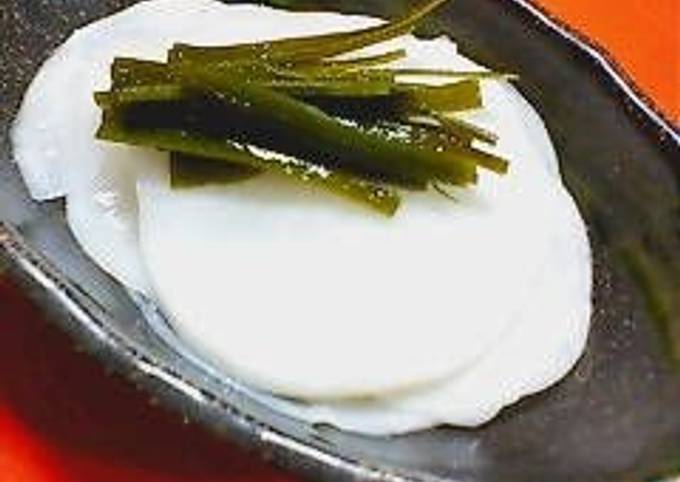Recipe of Speedy Turnip Senmai-Zuke (Kyoto-style Pickles)
Turnip Senmai-Zuke (Kyoto-style Pickles). Kyoto specialty, Pickled Turnip (Senmai-zuke) is marinated in sweet vinegar with konbu and chilli. Thinly slice the turnips with a knife. Sprinkle salt, allow to sit until water is released, then squeeze out excess water.

Hey everyone, I hope you’re having an amazing day today. Today, I will show you a way to make a special dish, turnip senmai-zuke (kyoto-style pickles). It is one of my favorites. For mine, I’m gonna make it a bit tasty. This is gonna smell and look delicious.
Turnip Senmai-Zuke (Kyoto-style Pickles) is one of the most favored of recent trending meals in the world. It’s simple, it’s quick, it tastes delicious. It’s enjoyed by millions daily. They are fine and they look fantastic. Turnip Senmai-Zuke (Kyoto-style Pickles) is something that I have loved my whole life.
Kyoto specialty, Pickled Turnip (Senmai-zuke) is marinated in sweet vinegar with konbu and chilli. Thinly slice the turnips with a knife. Sprinkle salt, allow to sit until water is released, then squeeze out excess water.
To begin with this particular recipe, we have to first prepare a few components. You can have turnip senmai-zuke (kyoto-style pickles) using 6 ingredients and 0 steps. Here is how you cook it.
The ingredients needed to make Turnip Senmai-Zuke (Kyoto-style Pickles):
- Make ready 350 grams of Turnips.
- Make ready 1 tsp of Salt.
- Make ready 50 ml of ○ Vinegar.
- Make ready 3 of to 4 tablespoons ○ Sugar.
- Take 10 of cm Kombu for dashi stock.
- Prepare 1 of Takanotsume (optional).
Senmai-zuke which is marketed in supermarkets are traditional pickles in Kyoto and are produced by marinating paper-thin slices of turnips with pieces of konbu Senmai-zuke is a typical winter pickle in Kyoto regarded as one of the three famous Kyoto pickles including suguki (vinegar vegetable. #senmaizuke#pickledturnips#英語でクッキングHi there! Senmai means one thousand slices, and senmai zuke means thinly sliced pickles – not literally one thousand slices of pickles but many thin slices. Turnip and daikon radish are the typical vegetables used for this style of pickles in Japan. I grew up visiting temples in Kyoto every winter.
Instructions to make Turnip Senmai-Zuke (Kyoto-style Pickles):
Quarter the turnips and slice thin and place in a medium glass bowl. Pour the liquid over the turnips, cover the bowl and chill Japanese style: With our Japanese turnips, we used a Kyoto recipe with strips of kombu seaweed layered between super-thin slices of turnip. Senmai-zuke is pickles made by cutting thinly sliced shogoin kabura (turnip), a traditional type of turnip grown in Kyoto, and marinating it with kombu seaweed to ferment lactic acid bacteria. Kyoto, Japan's old capital city, is famous for temples, shrines, old wooden houses and gardens. But, do you know it's famous for a variety of pickled vegetables?
So that’s going to wrap this up with this exceptional food turnip senmai-zuke (kyoto-style pickles) recipe. Thank you very much for reading. I am confident you will make this at home. There’s gonna be interesting food in home recipes coming up. Don’t forget to bookmark this page on your browser, and share it to your family, friends and colleague. Thanks again for reading. Go on get cooking!


